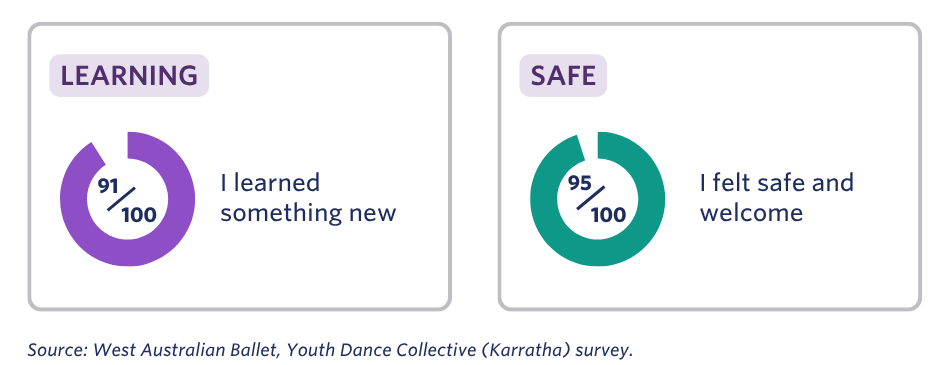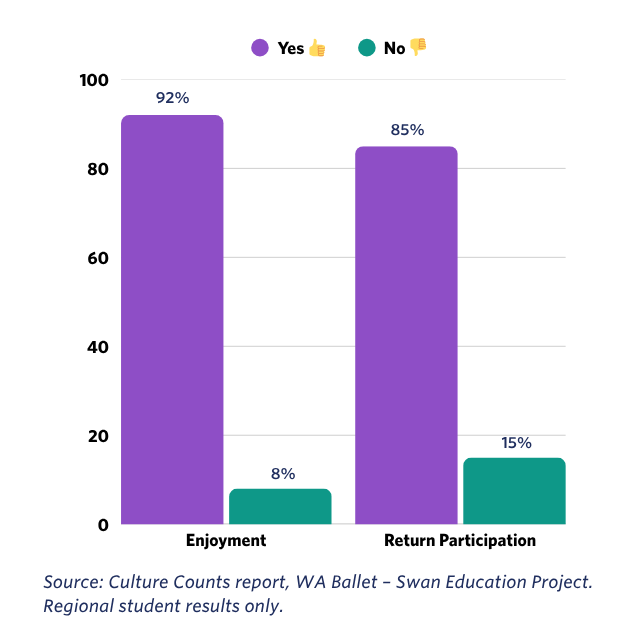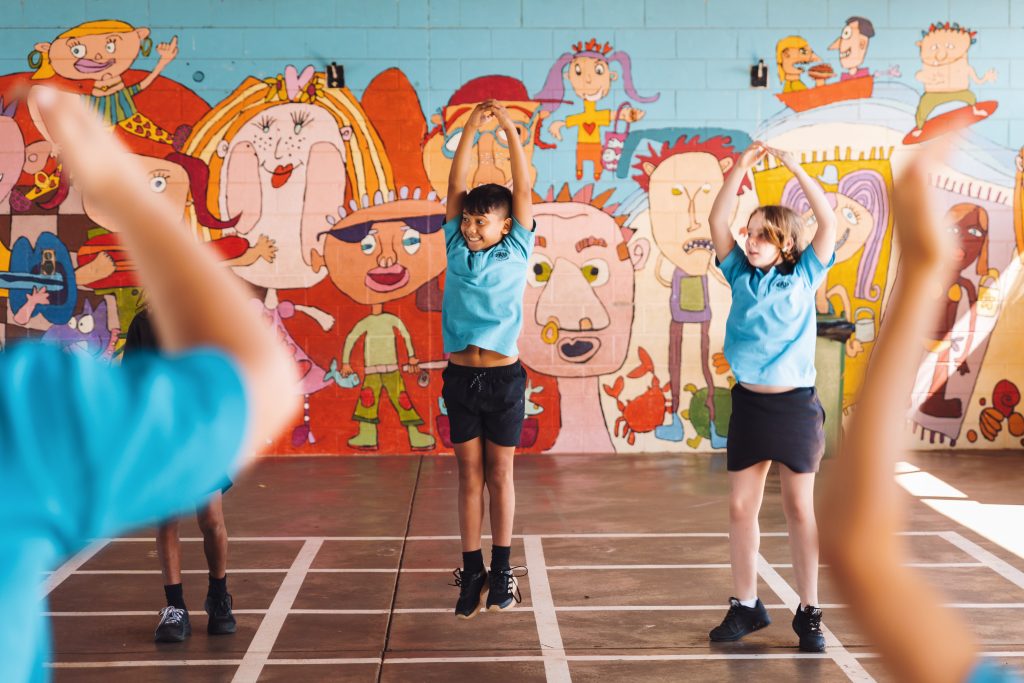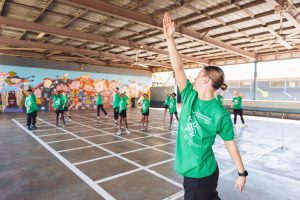West Australian Ballet offers a range of programs to support learning within the Arts. Culture Counts collaborated with West Australian Ballet to evaluate both the Swan Education program and the Chance to Dance program.
The Swan Education Program, Be Creative Karratha and Celebrating Hedland Creative Education Programs were delivered across 2022–2024 in Perth/Boorloo, Karratha/Ngurra and Port Hedland/Marapikurrinya. The Chance to Dance program offered children at low-socio economic schools, in metropolitan and regional Western Australia, the opportunity to experience dance and a live ballet performance.
Requirements
West Australian Ballet sought to gather outcomes results from students, teachers and teaching artists who took part in each program.
Key objectives were identified prior to the undertaking of this evaluation:
- Aligning strategic objectives to the evaluation framework: Culture Counts created a series of survey templates that spoke to West Australian Ballet’s strategic goals and the needs of their stakeholders
- Ensuring survey accessibility: paper surveys were provided for student respondents to complete
- Longitudinal reporting: The Swan Education program took place over a number of years, concluding with a comprehensive end-of-program report provided by Culture Counts
- Advocating the impact: Both the Swan Education and Chance to Dance programs were specifically designed to make dance and artistic expression accessible, and the evaluation needed to provide statistical evidence to support advocacy efforts.
Approach
Each group received bespoke surveys to understand their program experience. In particular, student respondents received surveys with questions customised to their reading comprehension level and understanding of qualitative concepts. This included the development of simplified questions with emojis, and the provision of paper surveys for students to complete after the workshop.
“Some of our dimension questions were re-written for our Swan Education Program with Culture Counts to ensure that they were suitable for the younger audience to understand, whilst still allowing us to report against the desired metrics.”
Furthermore, the holistic approach to evaluation ensured that the full breadth of impact was captured – promoting the importance of West Australian Ballet’s education programs on all cohorts involved.
“[The evaluation] allows us to hear directly from the students themselves, in their own words. They often have a different way of articulating what the program has meant to them.”
Outcomes
At the conclusion of the project, West Australian Ballet had a rigorous and insightful dataset to incorporate into annual reporting. The Culture Counts data, combined with other outputs such as participant numbers allowed for a 360 degree view of the impact of the project. Furthermore, the project impacted both Perth metro and regional participants, an aspect which was highlighted in the end-of-project reports produced by Culture Counts.
“We ran a wide range of education programs (workshops, masterclasses, in-schools work), both in Perth metro and regionally in WA. Our engagements for 2024 were 43,221 a 10% increase on 2023. A massive 22 weeks were spent regionally, and we engaged with 7,042 attendees (all free at the point of access) – a 106% increase on 2023.”
Five regional and inner-regional schools attended a mainstage production, four of which would be Chance to Dance Schools.

The alignment of the Culture Counts framework with the wider strategic goals of the organisation has “allowed us to advocate for the programs to stakeholders with current data,” says West Australian Ballet.
”It also allows us to share the voice of the participants directly. This enhances the communication of our values.”
Furthermore, the incorporation of Culture Counts data has “had a big impact on how we report back to funders/stakeholders.”

The consultation process undertaken in 2022 has had longterm impacts on the way children and young people are addressed in the evaluation process. Ensuring students have time to complete the surveys and have access to questions that are suitable for their comprehension level has become a common practice for West Australian Ballet.
”The main limitation is time. If we are doing a one-off workshop, we ensure that we carve time out of the workshop to enable the survey to take place. We also find with the younger students that they can have more limited comprehension of some of the questions. We combat this by reading the question exactly as is for the first time, and then simplifying the language if required.”
West Australian Ballet continues to evaluate both its education and mainstage programs. The extensive evaluation framework gives them the opportunity “to look at our output as a company as a whole”. “It has come to make up a large part of most of our reporting.”





